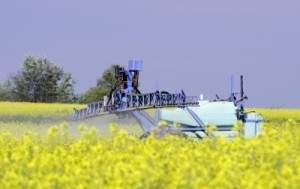Agriculture Chemical Use
Corn, Upland Cotton and Fall Potatoes 2010 (May 25 2011)
USDA, United States Department of Agriculture NASS, National Agricultural Statistics ServiceOverview for CORN
Laura Rieber No Spray Staff Writer98% of Corn grown in the Unites States is sprayed with some sort of herbicide (a weed killer) according to the USDA. This number is only for the chemicals used for killing weeds around corn. This does not include insecticides witch are the chemicals being used to kill the insects that feed off the corn or for the fungicide, the chemical that is used to kill the mold that can hinder crop production. Alex Minchenkov, a writer for the USDA states that 92.3 million acres of corn were planted in 2011 alone, up four percent then in 2010.
How much herbicide does it take to spray 90 million acres of corn?
A lot.
A USDA “Agriculture Chemical Use, Corn, Upland Cotton and Fall Potatoes 2010” report published May 25 2011 used the National Agriculture Statistic Service showed the top three herbicides that were sprayed as well as the amounts sprayed in pounds.
The report stated that there was 57,536,000 lbs of Glyphosate isopropylamine salt was sprayed, 51,129,000 lb of Atrazine sprayed and 27,921,000 lbs of Acetochlor sprayed in 2010 alone. That is over a 130 million pounds of just the top three chemicals used for killing weeds sprayed on corn.
It has been stated that over 75 % or over 12,000 products in the grocery store contain a form of corn. Take a look the next time your at the store. Familiar ingredients that are made from corn include, high fructose corn syrup, corn syrup, vitamin C, corn flower, corn oil and dextrose. You can safely assume that 98 % of those products unless labeled organic has been sprayed with a chemical.
If it’s IN EVERYTHING, what can we do?
First and foremost, know where your food comes from. You can either grow it yourself in a garden or get to know a local farmer who takes pride in growing all natural. Build a garden with friends or family, helping spread out the work needed to keep it going. Purchase all natural or organically grown foods. Learn, grow and stay aware of current agriculture trends. Read a book on organic agriculture to learn more about natural farming methods.
Check back with NoSprayHawaii.com often for more information on gardening tips and ‘how-to’s”. We share tips and advise that we have learned, been told, taught, done and practice.
Thanks For Supporting NoSprayHawaii.com
For the full report:
Agriculture Chemical Use Corn, Upland Cotton and Fall Potatoes 2010 (May 25 2011)
freedigitalphotos.net
The information contained on this site does not mean to imply use of any specific trade name.
“No Spray”
